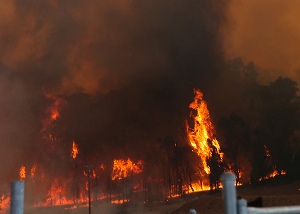Weather in Australia
Seasons
 Just like other countries in the Southern Hemisphere, Australia’s seasons are as follows:
Just like other countries in the Southern Hemisphere, Australia’s seasons are as follows:
- Winter: June to August
- Spring: September to November
- Summer: December to February
- Autumn: March to May
This means that Santa Clause can’t really use a sled to visit the Australian kids, while the mid-year school break takes place during winter.
Although the names of the seasons are the same as in the Northern Hemisphere, the weather patterns are totally different. For example, Australia is a very arid area hence the summers tend to be way hotter than in the Northern Hemisphere, while the rain can be either very abundant or not present at all. As a matter of fact, the indigenous Australians had their own seasonal calendar, sometimes having as many as six seasons.
Read more about the weather in Australia through the following articles:
- Winter in Australia: June in Australia, July in Australia, August in Australia
- Spring in Australia: September in Australia, October in Australia, November in Australia
- Summer in Australia: December in Australia, January in Australia, February in Australia
- Autumn in Australia: March in Australia, April in Australia, May in Australia
Temperatures
Sydney has a temperate climate. The warmest month is January, with temperatures averaging 65-78 F and the coldest month is July when temperatures average 46-60 F.
Melbourne has a moderate oceanic climate. The warmest month is January, with temperatures averaging 58-78 F (although 104 F has been recorded) and the coldest month is July when temperatures average 43-56 F.
Perth has a Mediterranean climate. The warmest month is January with temperatures averaging 73-85 F and the coldest month is July when the temperatures average 48-63 F.
Darwin has a tropical climate. During summer- from January to March- temperatures average 77-90 F, while the coldest month is July when the temperatures average 67-87 F.
Different Climates
As much as 40% of the continent is covered by sand dunes, making Australia the driest country. Australia is also the flattest continent and has the least fertile soils.
The climate varies widely, but most of the country has dessert like or semi-arid climate. The South East and South West parts have temperate climate, while the northern part of the country has a tropical climate. The climate is influenced by the ocean while El Nino plays an important part in the occurrence of cyclones.
Snow does fall in Australia and you will find it in the mountains of Australian Capital Territory, New South Wales, Tasmania and Victoria. Therefore the New South Wales, Tasmania and Victoria regions are particularly known for their ski tourism industries.
Tropical Regions
The tropical regions are found in the northern part of the continent and include the northern parts of the Northern Territory, Western Australia and Queensland. Here the weather has two seasons: wet and dry.
The wet seasons lasts between December and March and is hotter than the dry season. The temperatures can reach as much as 30 C / 86 F to 50 C / 122 F. The humidity is very high and due to the abundant rain flooding is quite common.
The dry season lasts between May and October with temperatures averaging 20 C / 68 F.
Dry Regions
The dry regions are found in central Australia comprising most of central and southern Western Australia, all the way to the southern parts of the Northern Territory and most of South Australia, the far west regions of Queensland and New South Wales and the north-western parts of Victoria.
The temperatures are very high during summer, reaching about 40 C /104 F and 16-24 C / 61 -75 F in the winter. During the night, the air is very cold, temperatures reaching 19 C / 66 F in the summer and as low as 0 C / 32 F during the winter.
Temperate Regions
The temperate regions are found in the south-eastern coast, comprising Tasmania, most of Victoria and New South Wales, the southern part of Queensland, the southern parts of South Australia and the south-western part of Western Australia.
The summers are hot with temperatures reaching as much as 30 C/ 86 F in the summer. The winters a cold but the average temperature is about 15 C / 59 F. During summers the heat waves are quite common, while the winters then to be wet and windy but quite mild if compared to the European winters.
Extreme Weather: Drought, Bushfires and Cyclones
Being the driest inhabited continent, Australia often experiences severe droughts. Generally speaking, for every 10 years there will be 3 years when the water supply is good and 3 years when the water supply is bad.
The dry weather also contributes to the occurrence of bushfires. They are large, out of control and occur in the bushland. The high temperatures and the sunshine make the trees and grass very dry, hence a perfect “fuel” for a bushfire. Eucalyptus tree, which have a lot of oil in them, are especially dangerous in a bushfire.
Cyclones are usually encountered between November and April and are common in the tropical climate. Every year, about six cyclones hit the Australian coas